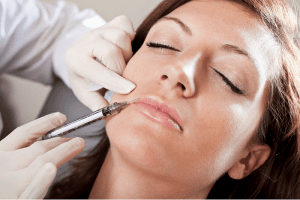Botox, an incredibly popular drug sold by Allergan Inc., is used primarily in cosmetic procedures designed to reduce facial wrinkles and is derived from the deadly botulinum neurotoxin produced by the bacteria clostridium botulinum. A different version of botulinum neurotoxin, known as Myobloc, is used in medical procedures designed to reduce muscle stiffness and spasms in people with cerebral palsy. People who are exposed to this toxin through having infected wounds or eating contaminated food develop botulism. Botulism is a paralytic illness that can paralyze the respiratory system and result in death if not treated.
New studies have shown that Botox doesn’t just reduce wrinkles. According to a recent study published in the Journal of Neuroscience, Botox that is injected into a person’s face can move into the brain and damage the central nervous system. When Botox was first introduced to the cosmetic market, there were no warning labels or particularly nasty proven side effects. However, the FDA mandated that warning labels be added to Botox and Myobloc after people began reporting trouble breathing and swallowing after using the drugs. The FDA has mainly directed these warnings to people with neuromuscular problems, but also admits that other people may be at risk as well. Due to these concerns, the FDA has begun investigating Botox its potentially dangerous side effects.
In the Journal of Neuroscience article, researchers experimented on rats with Botox to observe its effects on the brain. The researchers found that when they injected botulinum toxin into one side of a rat’s brain, the toxin would make its way over to the other side of the brain. When they injected a part of the brain responsible for vision, the toxin made its way into the rat’s eyes. The effects of the toxin were long lasting – researchers still detected the effects up to six months later. The results of this study support concerns about the dangers of injecting Botox into a person’s face. Although Botox is one of the best selling cosmetic procedures today, maybe clients should reconsider getting Botox treatments before more information and research can be obtained on the dangers of this potentially damaging paralytic agent.

 differences among them are how long they take, what they are made of, and how they work.
differences among them are how long they take, what they are made of, and how they work.









